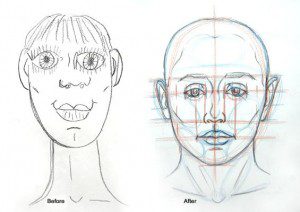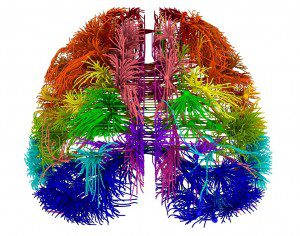By Deane Alban
Contributing Writer for Wake Up World
There’s a huge misconception about art and artists. Most people believe that you are born with talent or not, and there’s nothing you can do about it. While we can’t all be Van Goghs, the desire to create, along with proper instruction, can take a person of modest talent a long way towards creating art.
If you’ve ever had the urge to embrace your artistic side, why not do it? It doesn’t matter whether you think you are “talented” or not. Do it because creating art is a wonderful way to stimulate your brain, improve your well-being, and possibly get healthier! Do it for yourself because you enjoy it, and with lessons and practice, your hidden talents will blossom.
The Brain Benefits of Art
Here are some of the best ways that picking up your paint brush can benefit your brain and mental health:
1. Art makes you more observant. Leonardo da Vinci said, “Painting embraces all the ten functions of the eye; that is to say, darkness, light, body and color, shape and location, distance and closeness, motion and rest.” Creating art helps you learn to “see” by concentrating on detail and paying more attention to your environment.
2. Art stimulates the imagination. If you consider yourself a right-brained (artistic) person, you can enhance creative skills you already possess. If you’re left-brained (analytical), creating art will stimulate your creativity and imagination.
3. Art enhances problem-solving skills. Unlike math, there is no one correct answer in art. Art encourages out-of-the-box thinking and lets you come up with your own unique solution.
4. Art boosts self-esteem and provides a sense of accomplishment. We stick our kids’ artwork on the fridge to boost their self-esteem. Hanging your latest work of art on the wall can instill you with the same feeling.
5. Art reduces stress. Painting, sculpting, drawing, and photography are relaxing and rewarding hobbies that can lower your stress levels and lead to an overall improvement in well-being.
6. Art enhances cognitive abilities and memory, even for people with serious brain conditions. Dr. Arnold Bresky is a physician who has created a program he calls the “Brain Tune Up” that utilizes art therapy for patients that have Alzheimer’s and dementia. He has seen a 70% success rate in improvement of his patients’ memories. He believes that by drawing and painting, they are connecting the right and left hemispheres of the brain and growing new brain cells.
Art & Healing: Can Art Be Medicine?
Besides helping patients with dementia and Alzheimer’s, art used as therapy has successfully helped people with anxiety, depression, PTSD, chronic pain, cancer, high blood pressure, bipolar disorder, and other serious health conditions.
This video — Can Art Be Medicine? — shows some real-life examples of how art is being used as therapy. Particularly moving is the story of a Marine with PTSD who used art therapy to express his pain in a safe way and help lift the burden in a way that nothing else had been able to do.
Art is for Everyone
Unless you have a serious health condition, seeing an art therapist is not necessary. ArtTherapyBlog.com puts it like this, “If it’s therapeutic for you to draw or paint a few times a week (without an art therapist), then I would consider that therapy. Who says art therapy always has to be professional?”
Creating art isn’t just for artists, art is for everyone! Within each of us lies a spark of creativity. Maybe you’ve always wanted to try drawing, painting, sculpting, or fine art photography, but never had the time or opportunity so you put it on your “someday” list. Now that you know all the benefits artistic pursuits can provide, I hope you won’t put off exploring your artistic side any longer.
 You might be satisfied experimenting on your own, but art lessons can teach you shortcuts and techniques so you can see your work progress faster with less frustration. Here’s a dramatic “before and after” shot of two portraits done by an adult student. After just two lessons, the difference is amazing! While the purpose of art is to relax and have fun, you can get a lot of enjoyment watching your talent unfold. Thinking you suck at something isn’t much fun.
You might be satisfied experimenting on your own, but art lessons can teach you shortcuts and techniques so you can see your work progress faster with less frustration. Here’s a dramatic “before and after” shot of two portraits done by an adult student. After just two lessons, the difference is amazing! While the purpose of art is to relax and have fun, you can get a lot of enjoyment watching your talent unfold. Thinking you suck at something isn’t much fun.
Sources:
- Art Therapy Helps Alzheimer’s Patients Improve Memory at www.ArtTherapyBlog.com
- Before and After Portraits at www.Zhibit.org
Updated October 2014
Previous articles by Deane:
- Change Your Thoughts, Change Your Brain
- Experience the Brain Benefits of Do-It-Yourself Biofeedback
- Advantame – the “New & Improved” Artificial Sweetener, Approved by FDA
- 5 Reasons You Aren’t Getting Enough Vitamin D.. and What You Can Do About It
- Five Common Food Additives That Can Damage Your Brain
- Food Scams and Myths: Why Quality Matters
- The Alarming Truth About Supermarket Meat
- 18 Choices You Make Every Day That Keep You Up at Night
- Can’t Get the Hang of Meditation? Try This Instead
- Stress, Telomeres, and the Secret to Prevent Aging
- 20 Common Medications That Can Cause Memory Loss
- 5 Common Food Additives That Are Toxic to Your Brain
- The ABCs of Vitamins for Memory and Brain Health
Contributing writer Deane Alban holds a bachelor’s degree in biology and has taught and written on a wide variety of natural health topics for over 20 years. Her current focus is helping people overcome brain fog, “senior moments”, and other signs of mental decline now, and preventing Alzheimer’s and dementia in the future.
The human brain is designed to last a lifetime, but modern life takes a greater toll on the brain than most people realize. Deane teaches the best ways to keep your brain healthy and stay mentally sharp for life at her website BeBrainFit.com.

If you've ever found value in our articles, we'd greatly appreciate your support by purchasing Mindful Meditation Techniques for Kids - A Practical Guide for Adults to Empower Kids with the Gift of Inner Peace and Resilience for Life.
In the spirit of mindfulness, we encourage you to choose the paperback version. Delve into its pages away from screen glare and notifications, allowing yourself to fully immerse in the transformative practices within. The physical book enriches the learning process and serves as a tangible commitment to mindfulness, easily shared among family and friends.
Over the past few years, Wake Up World has faced significant online censorship, impacting our financial ability to stay online. Instead of soliciting donations, we're exploring win-win solutions with our readers to remain financially viable. Moving into book publishing, we hope to secure ongoing funds to continue our mission. With over 8,500 articles published in the past 13 years, we are committed to keeping our content free and accessible to everyone, without resorting to a paywall.








